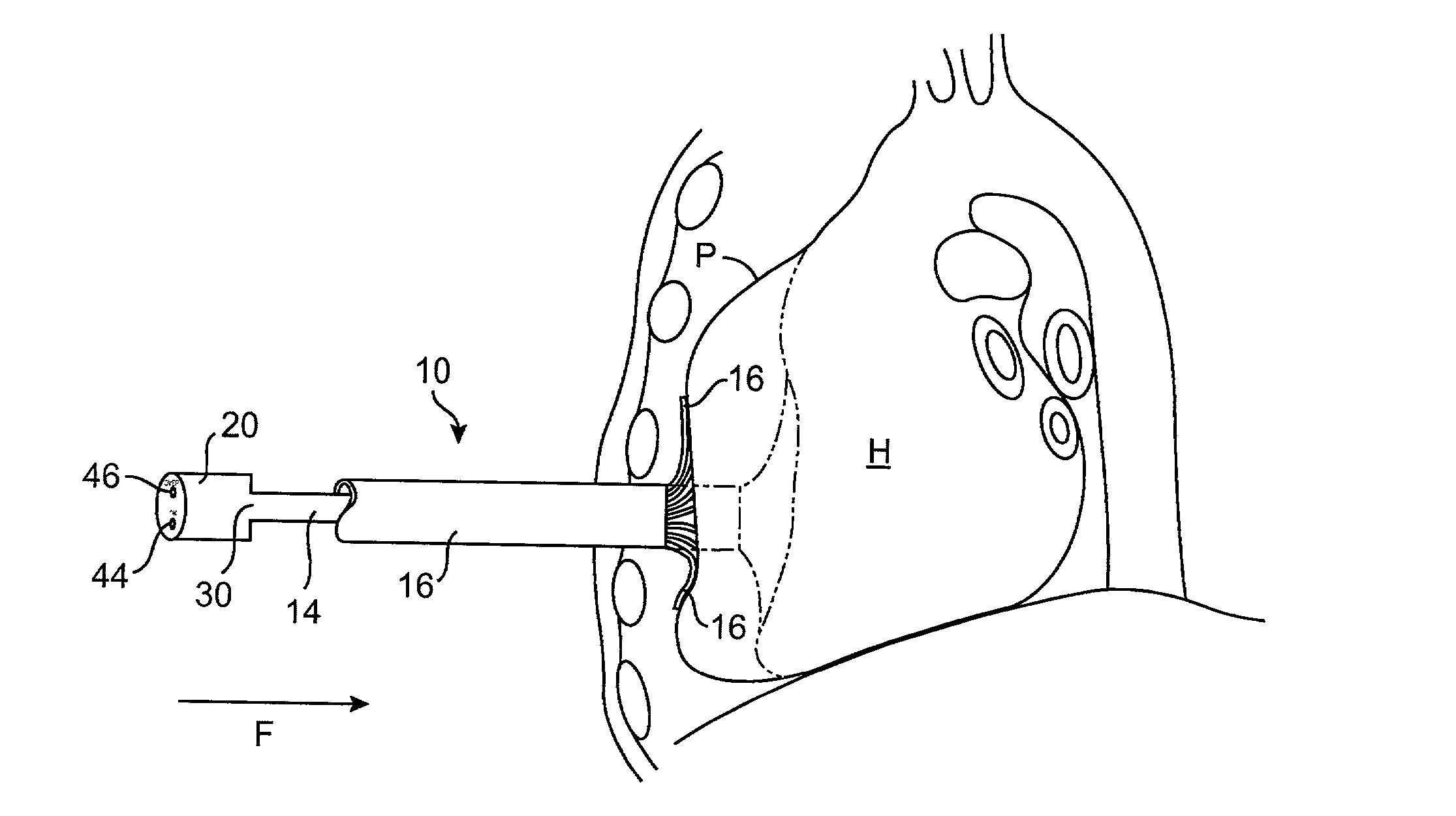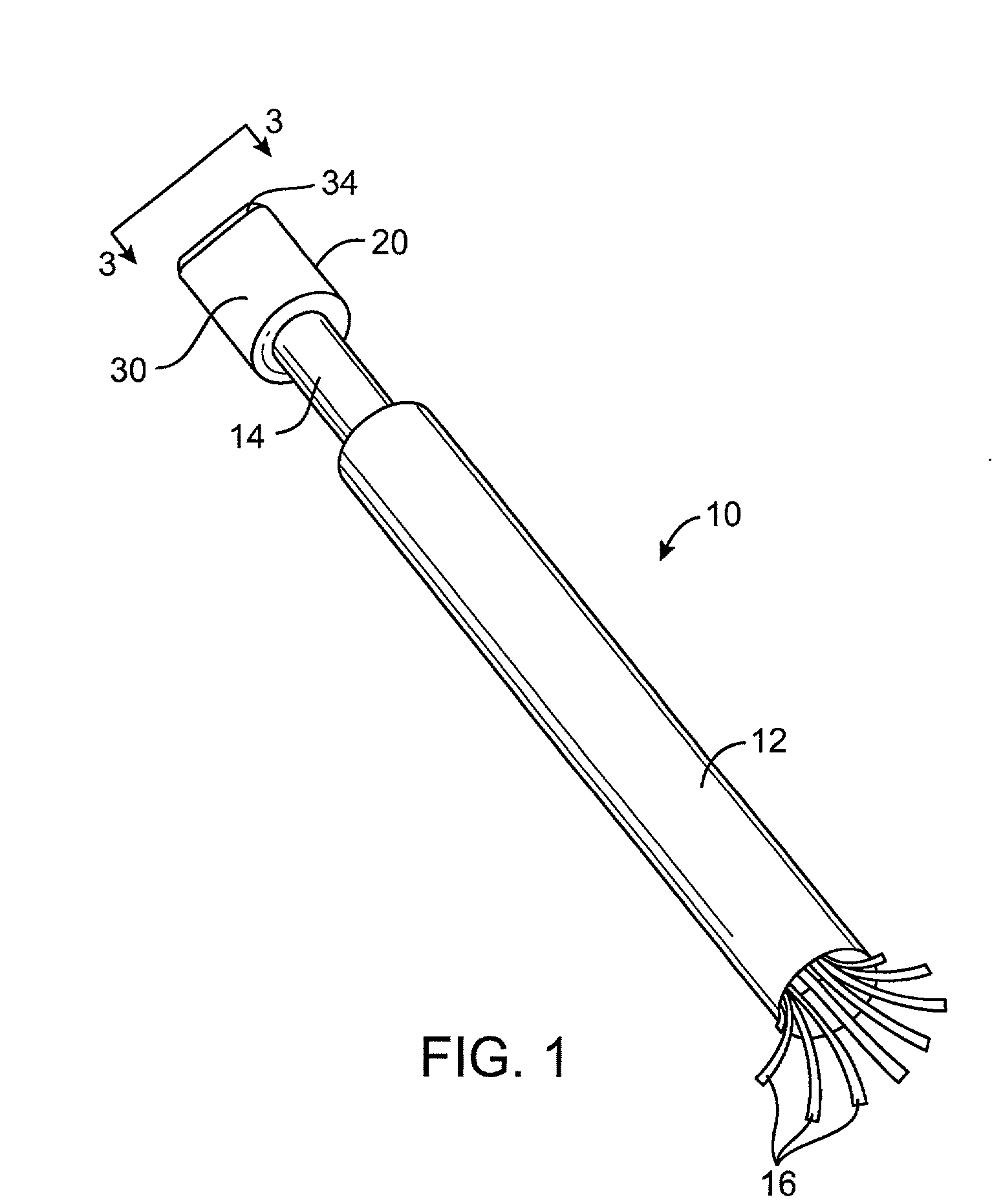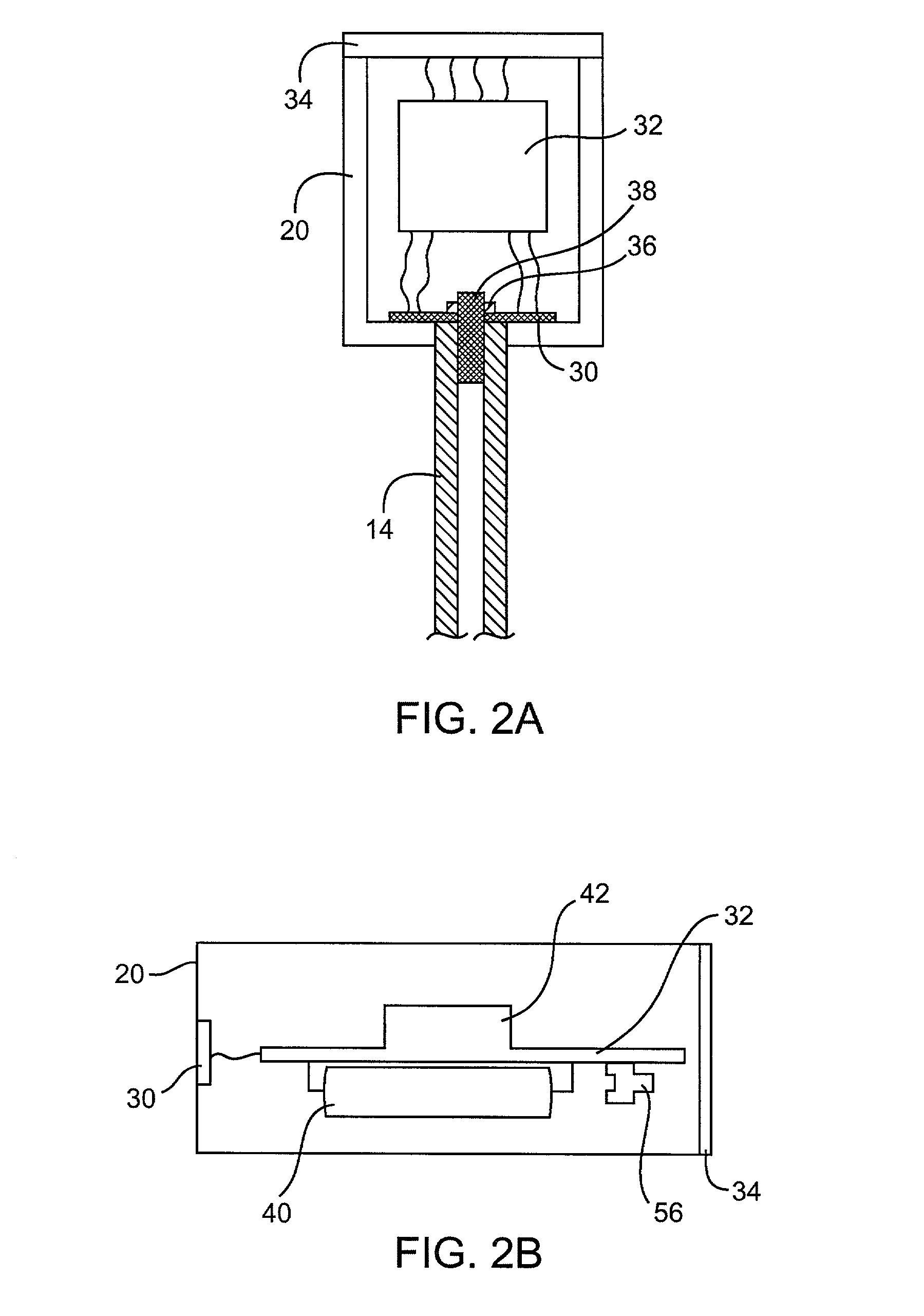Apparatus and method for monitoring performance of minimally invasive direct cardiac compression
a technology of direct cardiac compression and monitoring apparatus, which is applied in the field of medical devices and methods, can solve problems such as preventing the operator from receiving tactile feedback from the devi
- Summary
- Abstract
- Description
- Claims
- Application Information
AI Technical Summary
Benefits of technology
Problems solved by technology
Method used
Image
Examples
Embodiment Construction
[0031] Referring now to FIG. 1, an exemplary device 10 constructed in accordance with the principles of the present invention generally comprises a shaft 14, a structure 16 attached to a distal end of the shaft adapted to contact the pericardium or other heart surface to compress the heart, and a force transducer 30 coupled to the proximal end of the shaft 14 to produce a signal which corresponds to an amount of force applied through the shaft 14 to the heart. A signal processor 32 receives the force transducer 30 signal and produces an output corresponding to the applied force. A display 34 receives the output of the signal processor 32 and produces a human decipherable indication based on the applied force. It will be appreciated that the following depictions are for illustration purposes only and does not necessarily reflect the actual shape, size, or dimensions of the minimally invasive direct cardiac massage device 10. This applies to all depictions hereinafter.
[0032] The devic...
PUM
 Login to View More
Login to View More Abstract
Description
Claims
Application Information
 Login to View More
Login to View More - R&D
- Intellectual Property
- Life Sciences
- Materials
- Tech Scout
- Unparalleled Data Quality
- Higher Quality Content
- 60% Fewer Hallucinations
Browse by: Latest US Patents, China's latest patents, Technical Efficacy Thesaurus, Application Domain, Technology Topic, Popular Technical Reports.
© 2025 PatSnap. All rights reserved.Legal|Privacy policy|Modern Slavery Act Transparency Statement|Sitemap|About US| Contact US: help@patsnap.com



